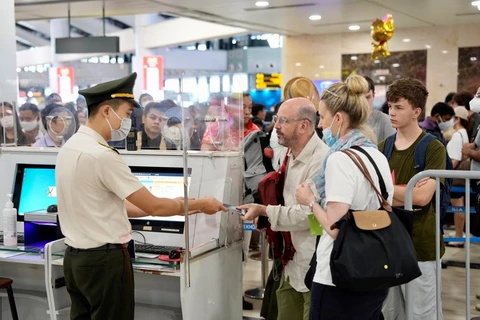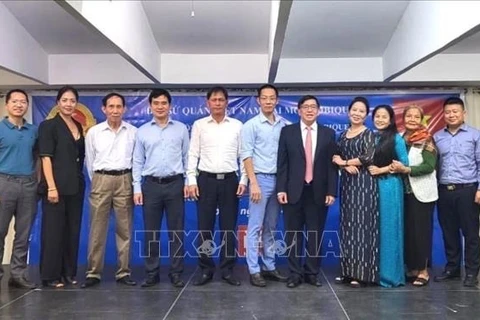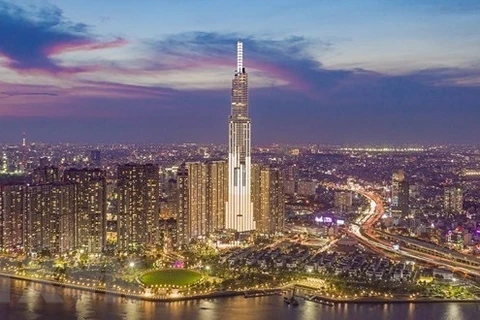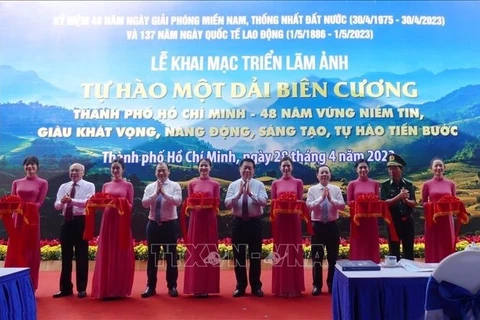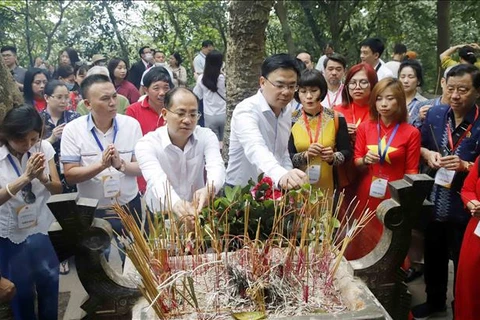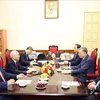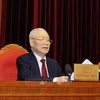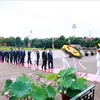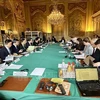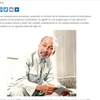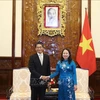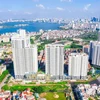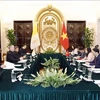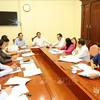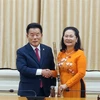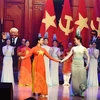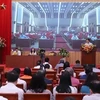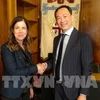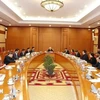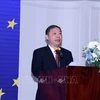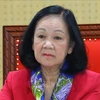Hanoi (VNA) – The historic Ho Chi Minh Campaign (April 26-30, 1975) was a brilliant milestone in the history of Vietnam’s struggle for national liberation.
The campaign is known as the largest strategic offensive movement in Vietnam, demonstrating the pinnacle of the Vietnamese army's art of coordination of operations. More importantly, the campaign was a decisive strategic operation in the 1975 Spring General Offensive and Uprising, successfully ending the resistance war against the US imperialists, completely liberating the South, and reunifying the country.
During the 1975 Spring General Offensive and Uprising, under the leadership, direction, and command of the Politburo, the Central Military Commission, and the General Command of the Vietnam People's Army, three strategic offensives were carried out. The first one from March 4-24, 1975 liberated the Central Highlands. The second one from March 5-29 liberated Hue-Da Nang and the last one was the historic Ho Chi Minh Campaign to completely liberate the South.
At the end of March 1975, the Vietnamese army continuously won great victories in the Central Highlands and Hue-Da Nang campaigns which destroyed two corps, liberated 16 provinces, and brought the number of people in the liberated areas to 8 million.
The two campaigns helped Vietnam’s main infantry units accumulate much experience, and obtain weapons and technical equipment of the enemy, thus increasing the combat strength of the main corps. Vietnamese armed forces in localities at that time also grew in both quantity and quality, creating favourable conditions for the final strategic battle.
On April 1, 1975, the Politburo held a meeting to supplement the new strategic determination on seizing the strategic opportunity, with a quick, daring, and unexpected direction Vietnam would carry out a general offensive and a total uprising as soon as possible, preferably in no later than the end of April, 1975.
At a meeting on April 8, 1975, at Ta Thiet military base in the southern province of Binh Phuoc’s Loc Ninh district, the Politburo decided to establish the Command of the Sai Gon-Gia Dinh Liberation Campaign.
The Politburo affirmed that it was a new strategic opportunity to liberate the South. Therefore, it was necessary to quickly mobilise forces, weapons, techniques, and materials to liberate Saigon before the rainy season.
On April 14, 1975, the Politburo and the Central Military Commission approved the plan to liberate Saigon-Gia Dinh. The plan determined that the offensive would take place simultaneously in five directions: Northwest, Northeast, East, Southeast, West, and Southwest. The offensive was determined to take place quickly, completely defeat enemy troops, and protect the people, and economic and cultural establishments in the city.
The military offensive had the task of dividing, encircling, and disintegrating enemy divisions in the outer circle, preventing them from clustering in the inner city. The Vietnamese army targeted to occupy large bridges, paving the way for corps together with armed forces, commandos, and insurgent masses to capture the main targets, including five important ones - Independence Palace (where the President of the Saigon Palace used to live), the Headquarters of the Joint General Staff of the Saigon Army, Tan Son Nhat Airport, the Headquarters of the Special Capital Zone, and the National Police Headquarters.
Also on April 14, 1975, following the wishes of the people and the armed forces on the battlefield, including soldiers and people of Saigon-Gia Dinh city, the Politburo approved the proposal of the Operation Commander, “agrees the Saigon Operation to be named Ho Chi Minh Campaign.”
The news that the campaign was named after Uncle Ho reached the entire people and soldiers, adding new strength and readiness for the operation.
At 5:00 p.m. on April 26, 1975, Vietnamese troops fired and began a major attack on Saigon, opening the historic Ho Chi Minh Campaign. From April 26 to 28, Vietnam broke through the outer defense line, smashed the resistance of enemy divisions, and approached Saigon. The enemy was completely confused about strategy.
On the night of April 28, 1975, the Campaign Command ordered troops in five directions to simultaneously approach Saigon, and at the same time instructed Military Regions 8 and 9 in the southern region to coordinate and liberate the South. At 5 am on April 29, 1975, Vietnamese troops attacked the enemy's defensive bases to enter the inner city of Saigon.
After three days and nights of fierce fighting, the Vietnamese army captured many bases and positions, destroying almost all of the enemy divisions No 5, No 25, and No 22, No 18, and No 7.

Tank of Tank - Armored Force No. 203, Division 304, Army Corps No. 2 enters the Independence Palace, April 30, 1975 (Photo: VNA)
In the early morning of April 30, 1975, Vietnamese troops rushed into Saigon from all directions. They quickly captured the enemy's Air Force Command and the enemy's Airborne Division Command to own Tan Son Nhat airport. At 10:45 am on the same day, Vietnamese soldiers attacked the Independence Palace, captured the entire Saigon government, and forced President Duong Van Minh to declare unconditional surrender.
At 11:30 am, the revolutionary flag flew over the roof of the Presidential Palace, claiming the victory of the historic Ho Chi Minh Campaign.
The Ho Chi Minh Campaign continued to develop Vietnamese military art to a new height. It is the art of concentrating military force, forming an overwhelming advantage over the enemy at its head, forming a tight encirclement posture based on strong military and political forces, in which strategic maneuvering main armed forces play a pivotal, decisive, and leading role. The operation also included performing synergies between the armed forces, the attack directions, integrating the main corps with the local forces.
This was an unprecedented large offensive campaign on the Vietnamese battlefield, far surpassing previous major campaigns in terms of force size, intensity, attack speed, the content of synergistic combat operations, level of combat, the degree of thoroughly completing the strategic tasks, as well as the political purposes of the Vietnamese revolutionary war.
Celebrating the 48th anniversary of the Liberation of the South and Reunification Day (April 30, 1975) is an opportunity for Vietnamese people to be more proud of the glorious tradition of the heroic nation, the heroic army, and generations in the Ho Chi Minh era. Today's generation and future ones continue to join in developing and protecting the nation./.



